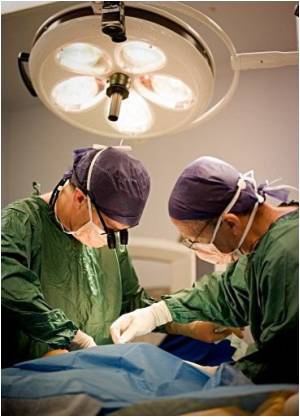A compound found in sunless tanning spray may help heal post-operative tissue, according to a new American research.

The work has appeared in the Proceedings of the National Academy of Sciences.
Procedures to remove cancerous breast tissue, for example, often leave a hollow space that fills with seroma fluid that must typically be drained by a temporary implanted drain.
Co-author Dr Jason Spector, plastic surgeon at NewYork-Presbyterian Hospital/Weill Cornell Medical Center, said: "This is an unpleasant side effect of surgery that is often unavoidable."
The gel could potentially be used in all different reconstructive surgeries to prevent seroma formation.
Dr Spector said: "The new substance would act to glue together the hole left behind to prevent seroma buildup."
Advertisement
The sticky properties of DHA are what allows sunless tanner to adhere to the skin without being wiped off.
Advertisement
Currently used "bio-glues" are made from animal products and take a long time to degrade in the body - both factors that raise the risk of infection.
"DHA is a compound that is naturally produced in the body...The glue is broken down, or metabolized, and then safely removed by the body," said Dr David Putnam, the study's senior author and a biomedical engineer from Cornell University's Department of Biomedical Engineering and School of Chemical and Biomolecular Engineering.
Dr. Putnam's lab and his collaborators work to create safe, synthetic compounds from chemicals found in nature.
DHA is an intermediary compound produced during the metabolism of glucose, a sugar used by the body for fuel.
To create the new compound, MPEG-pDHA, Dr. Putnam and his lab first bound the single molecule monomer of DHA, which is highly reactive, to a protecting group molecule, making it stable enough to manipulate.
This allowed the engineers to bind the monomers together to form a polymer, or chain of molecules, along with MPEG.
Doing so allows the polymer gel to be injected through a syringe.
Dr Putnam said: "Making a polymer from DHA has eluded chemical engineers for about 20 years."
Now in gel form, the compound has the ability to stick tissues together, preventing the pocket from filling with seroma fluid, like an internal Band-Aid, explains Dr Putnam.
The researchers found that the gel prevented or significantly lowered seroma formation or fluid buildup in rats that had breast tissue removed.
"The next step would be to test the gel on larger animals and then in clinical trials in human surgical cases," said Dr Spector.
Previous results, published by Drs. Putnam and Spector, in the August 2009 issue of the Journal of Biomedical Materials Research, showed that the gel also prevented bleeding in a rat liver.
Dr Spector said: "This is another aspect of the compound that would be greatly beneficial if proven to be applicable in humans.
"The gel could speed the healing and decrease bleeding within the body."
Source-ANI







